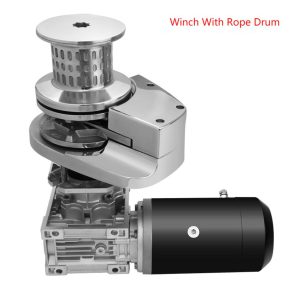Be realistic so you know what is available as overestimating income can lead to funding gaps. Operating budgets are typically developed and implemented on a yearly basis, according to an organization’s specific fiscal year. However, some organizations choose to create a two- or three-year operating budget instead. Even the financially or programmatically smallest nonprofits—often operated entirely with volunteers — have their knowledge of costs spread across two or more people. While it’s often most useful to categorize revenue by source to keep your nonprofit’s fundraising on track, the most effective way to organize expenses is usually by function. This is because nonprofit tax returns require you to report on your functional expenses, so it’s helpful to keep all of your documents consistent for financial analysis purposes.
Statement of Financial Position Template
A nonprofit budget is a financial roadmap that outlines how an organization plans to use its funds. It details expected income and breaks down operating expenses and overall costs. With these templates, you can easily create a detailed budget that includes all the necessary information, from projected income and expenses to funding sources and cost estimates. Plus, the easy-to-use format makes it simple to track your progress and make adjustments as needed. Another unique aspect of nonprofit budgeting has to do with expense allocation methods. When your organization is planning a campaign or project, you probably start by taking some time to envision what you want the results to look like and set actionable goals to get there.
Financial Projection Templates in Google Docs Google Sheets Excel Word Numbers Pages PDF
Nonprofit organizations, driven by their missions to create positive change, often operate under financial constraints. Ensuring that resources are used efficiently and in alignment with the organization’s goals is essential. Effective expense management plays a central role in this endeavor, enabling nonprofits to maximize the impact of every dollar spent. Good budgeting for nonprofit organizations is critically important to success, as nonprofits typically have stretched resources, fluctuating funding, and/or heavy reliance on specific funding sources. Including insurance in a nonprofit operating budget helps protect your organization from unexpected financial risks. This can include covering liability for employees or volunteers, property insurance for buildings and equipment, and insurance for events or activities that your nonprofit hosts.
- For your nonprofit to expand its reach, make a greater impact in the community, and achieve financial sustainability, your leaders need to set clear goals and plan effectively.
- It helps prevent your organization from focusing only on total budgeted amounts without considering when the cash will actually be available.
- Fund your mission and transform your impact by reading The Ultimate Guide to Nonprofit Fundraising.
- However, if your nonprofit organization mainly runs activities in the summer months, you might decide to run a campaign during the spring.
- Many foundations and most government agencies will have detailed rules about what can and cannot be included in a proposal budget.
- This can include holding more events, applying for more grants or contacting major donors for more support.
Step 1: List Your Projected Revenues and Expenses
- Your organization should also determine its policy on reserves, including the ideal long-term level as well as how much and when to contribute or draw them down.
- Or decide how to increase your revenues in order to cover any shortcomings.
- Well-developed budgets help your nonprofit be financially transparent with its team, board, supporters, and community at large.
- Nonprofit organizations continually grapple with maintaining and improving their operations, especially in today’s volatile economy and a rapidly changing world.
- In fact, a survey conducted by Sage found that nonprofits rank budgeting and financial planning as one of their top five internal challenges.
- By reviewing and adjusting budgetary goals and projections regularly, nonprofits can ensure they remain aligned with their mission, address emerging needs, and adapt to the evolving landscape.
An operating budget is essential for your organization because it helps organize short-term goals. Additionally, budgeting provides a transparency mechanism, as it can communicate the management of resources to your stakeholders. There are two major ways that organizations categorize costs in their budgets. Nonprofit leaders set the direction and tone for the entire organization’s operations.
Real-Life Examples Of Impact
Teach team members how to interpret this information and take advantage of the software’s reporting features to simplify their analysis. For new expenses, request quotes from vendors or providers to budget for these costs as accurately as possible. For example, you may reach out to the new bus company you plan to use for your organization’s summer camp to estimate how much their services will cost. Nonprofit budgeting formalizes the process of allocating resources to different areas of your organization.
Figure Out Your Cash Flow Projection
Create a rough list of these costs and highlight the ones that will apply to the coming fiscal year. Then, add them together with your existing expenses, such as rent, bills, and salaries for your current staff members. Use this estimate to set an overall goal of how much Accounting Services for Nonprofits: Benefits and How to Choose the Right Provider revenue you’ll need to bring in to cover all of your costs for the year. For example, a small nonprofit focused on youth development should regularly include volunteers in their budget planning meetings. Their on-the-ground perspective will help forecast realistic program costs and identify cost-saving opportunities. To clear up any confusion surrounding these resources, we’ll begin by answering some common questions about nonprofit budgets.
Alignment with your nonprofit’s mission
A nonprofit budget template Excel creates is pretty similar to a nonprofit budget template Google Sheets does. It typically requires getting income from multiple sources for nonprofits to thrive. The budget lists all of those sources and provides an indication of the amounts the board can expect to come in from each source. Funds raised may come from ticket sales, membership fees, proceeds of auctions, galas, sales of goods or services, or other fundraising activities. Let us be your financial partner as you navigate the complex world of nonprofit finance. Congratulations – you now have the basics of your nonprofit https://nyweekly.com/business/accounting-services-for-nonprofits-benefits-and-how-to-choose-the-right-provider/ operating budget!
Nonprofit Event Budget Template
To keep everything organized, your budget categorizes funds into clear nonprofit budget categories, helping you allocate resources efficiently and maintain financial stability. In this guide, you’ll walk through the essentials of budgeting for nonprofits, covering different budgeting methods, best practices, and key components. Nonprofits often rely on unpredictable funding streams such as donations, grants, and seasonal fundraising campaigns. This unpredictability can make it difficult to maintain a consistent income flow, leading to challenges in long-term planning and resource allocation. Are you looking to expand a program, hire additional staff, or purchase new technology? The best way to ensure your budget is accurate and actionable is to have expert nonprofit financial professionals create it for you—like our team at Jitasa.



